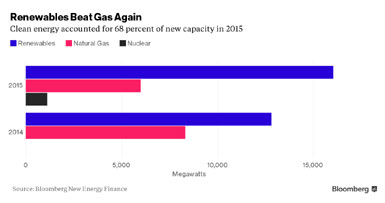In the wake of the Supreme Court decision to place the Clean Power Plan on hold, governors from 17 states are joining to make a clean energy future a reality under the "Governors’ Accord for a New Energy Future."
Governors say they plan to establish goals and benchmarks to accelerate energy efficiency and renewables, modernize the grid, and incentivize clean transportation, such as hydrogen and electric vehicles.

Signatories represent 40% of US population: Hawaii, California, Oregon, Washington, Nevada, Iowa, Minnesota, Michigan, Pennsylvania, Virginia, Delaware, New York, Connecticut, Massachusetts, Rhode Island, New Hampshire, and Vermont.
The accord is based on the economic benefits of rapidly moving in this direction, not climate change – which was intentionally omitted from the discussion to get bipartisan support.
Michigan is the only state in the group that’s working to block the Clean Power Plan in court, and Nevada’s Governor signed on after the state just eliminated distributed solar incentives.
Importantly, governors agree that it’s time to transition from fossil fuels, and that it can be done profitably.
New York’s Governor Cuomo sees the coalition "developing an effective national energy policy to ensure a safer, greener and more sustainable future for all."
Parallel efforts include:
- City Energy Project which focuses on energy efficiency in buildings
- Carbon Neutral Cities Alliance, which consists of many of the world’s largest cities
- "Under 2 MOU," led by Governor Brown, 12 governments are collaborating to stay under 2°C global temperature rise.
Read our article, Most Ambitious Climate Goals Lead to Greatest Economic Growth.
Learn more about the Governors’ Accord for a New Energy Future:
